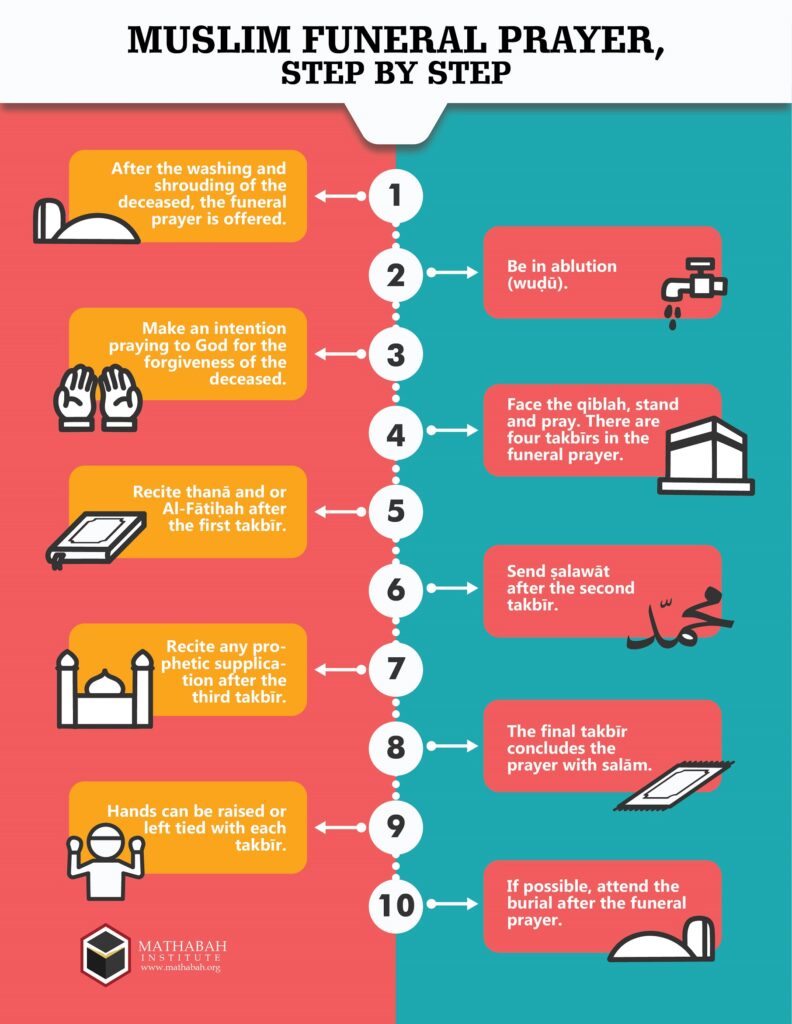By Yūsuf Badāt
The funeral prayer (janāzah) is a communal obligation (farḍ al-kifāyah) upon believers after the passing of a muslim in their community. In other words, if some Muslims of the region conduct the funeral service, the remaining members would be absolved.
The funeral prayer is offered after the washing and shrouding of the deceased.
Like any formal prayer (ṣalāh), one must be in the state of purity and ablution (wuḍū) to commence the funeral prayer.
One is required to formalize an intention that they are offering funeral prayers to God, for the forgiveness of the deceased.
Prayer Description
- Face the qiblah.
- Stand and pray.
- There are four takbīrs (saying Allāh Akbar) in the funeral prayer.
- Recite thanā and or al-fātiḥah after the first takbīr.
- Reciting al-fātiḥah is preferred by the Shāfiʾe and Ḥanbalī schools of jurisprudence. Ḥanafī jurists give preference to reciting the thanā supplication.
- Any supplication is to be recited after all four takbīrs according to the Māliki position.
- Recite a ṣalawāt after the second takbīr.
- Recite any prophetic supplication after the third takbīr.
- The final takbīr concludes the prayer with salām.
- Two salāms (one on the right thereafter the left) is preferred by the Ḥanafī school.
- Only one salām is favoured by the Māliki and Ḥanbalī schools.
- Supplications can also be recited after the final takbīr prior to making the salām, as is preferred by the Shāfiʾes and Mālikis.
Hand Raising
Hands can be raised or left tied with each takbīr.
- Raising hands only to commence the prayer at the beginning, is preferred by the Ḥanafis, thereafter the hands should remained tied until the end of the prayer.
- Shāfiʾes and Ḥanbalīs prefer raising hands with every takbīr.
Burial
If possible, attend the burial after the funeral prayer.
(Refrences: Fiqh al Islāmīy wa Adillatuhū, Fiqh ʿAlā Madhāhib Al Arbaʿa, Qāmūs Al-Fiqh)







